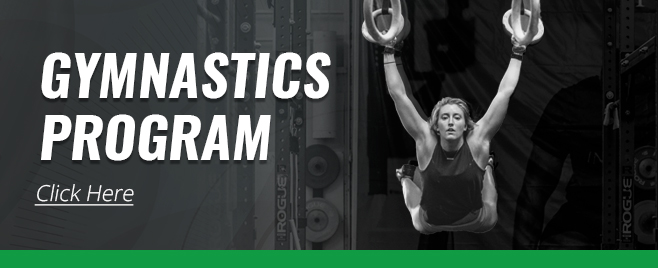
5 Reasons You Struggle with Toes-to-Bar
Written by Michele Vieux
Oh the elusive toes-to-bar. It seems like such a straightforward movement that any strong and fit human should be able to accomplish without much thought.
However it is typically one of the last movements CrossFitters are able to achieve. Most look to lack of midline strength as the primary cause, and although it might be, I suggest there are at least three other places to look before determining that is your (only) issue.
So if you’re struggling with your toes-to-bar even though it seems like you should be able to do them based on your strength and athletic prowess, then read on for some tests and solutions to help you improve upon yours.
1) Weak Lower Abdominal Muscles
This is usually the first place we look for the problem and while they can be a culprit, especially in the untrained population, chances are this is actually only a small piece of the puzzle for most folks. If you have trouble with most or all abdominal/midline exercises, this is where you should first focus some attention.
Test to see if this is you by hanging from a bar and performing mini-crunches. Bring your knees to waist height without touching the floor between reps. Repeat this for AMRAP in 30 seconds. You should be able to get at least 15 reps in 30 seconds.
If you cannot, you might consider putting in some extra time on your abs with any or all of these exercises to strengthen your midline.
2) Weak Shoulder Girdle and/or Lats
These are the other common culprits when it comes to strength deficiency for completing toes-to-bar. Guess what?
The shoulders aren’t just responsible for connecting our arms to our bodies, they are the first thing to activate in the toes-to-bar (and pull-up) and should continue to be active and strong throughout the entire movement not only to protect our shoulder joints but to also provide assistance in the kipping movement on the backswing and to lessen the distance our toes have to travel to touch the bar.
That first bit of shoulder activation when we hang from the bar is called a scapular pull-up and you should be able to hold that position for 30 seconds and you should also be able to do at least 10 unbroken reps of the movement.
The backswing and the toe-distance lessening are mostly controlled by strong lat muscles which allow you to push down on the bar to create a bigger, stronger kip. The stronger this portion of the swing, the higher the body travels and the shorter the distance your toes have to travel to touch the bar.
Here’s a test you can do with a partner to determine if you need to work on strengthening your lats (or just learn how to activate them). If you find that you are strong enough to do this test then great – you just needed to remind your lats of their role in all of this. But if you’re struggling to maintain the hollow position in this test, keep doing the test every day until it’s easy. You should also work more pulling exercises and static holds into your routine.
Ideas for pulling: pull-ups with varying hand grips, ring rows, DB rows, landmine rows, barbell rows, CrossOver Symmetry, hand-over-hand sled pulls, heck, you could even try swimming. Ideas for static holds: straight-arm hangs with scapular retraction, chin-over-bar holds, chest-to-bar holds, or get your lower abs and scaps at the same time with L-hangs.
3) Lack of Thoracic Mobility
This is where many people’s problems lie with toes-to-bar, pull-ups and life in general. A lot of times people mistakenly think they lack shoulder mobility (which could be the case) when it is actually thoracic mobility that is the problem.
This is the number one killer of desk jockeys because the problem can exacerbate so quickly into much larger problems – like injury or Upper Cross Syndrome – if left untreated. (see treatments).
But how do you know if this is your issue?
Here’s a test that is also a treatment meaning, if you can’t pass this (wall slide) test, keep doing it until you can. The front swing (Superman or bow position) on kip requires a great deal of thoracic mobility to be able to push your head and chest through so if you struggle with this portion of the toes-to-bar (or pull-up) then look here first.
If you can’t pass this test, you shouldn’t be going overhead movements with weight nor should you be kipping (jamming yourself) into a position you cannot safely achieve.
So just to be absolutely clear, if you can’t perform these you also cannot perform a safe overhead position or a safe kip so don’t get too hung up on going Rx in workouts on kipping movements until you can Rx your wall slide.
4) Timing
This is one of the places people struggle the most because they may have all of the components to stringing toes-to-bar together (including the strength) but don’t have the timing down well enough to get past the first three reps. The solution to this is how the athlete approaches the bar or the mount.
By jumping into a slightly piked shape they can grab the bar and aim their feet just forward the bar on the opposite side to get the rhythm started. It also helps to start with kipping half toes-to-bar with focus on keeping the legs straight. Some of y’all are fans of the tuck-to-kick approach to the movement but try the straight leg toes-to-bar first, then you can back off that and start tucking more as you become more fatigued.
We like this because it creates more momentum in the legs, and with said momentum, you can swing your legs higher with less physical effort.
5) Tight Hamstrings
This is the final place to look, especially if you are good to go in the four areas listed above. If your kip timing is on point and you are able to get your knees to your armpits consistently, then you should be able to do toes-to-bar. Once your knees are in your armpits, all it takes is a quick knee-extending kick to touch those toes to the bar.
So if you struggle with high-kicks in the warm-up or you can’t touch your toes, lack of hamstring flexibility is likely your demise in toes-to-bar, deadlifts, the second position in Olympic lifting and tying your shoes for time. More hamstring mashing, flossing, inch-worming, and high-kicking for you.
Chances are, you might need a little extra help from a bodyworker or yoga. Don’t forget that we are always shooting for the ultimate balance in life and athletics. So if you spend five hours per week contracting your muscles by lifting weights in the gym, you should also spend five hours stretching those muscles as well. I wonder how many of our Yins and Yangs are balanced? Just something to consider.
Just like with any sport or skill we want to improve upon, we should break down the movement to address its individual parts. This will allow us to identify weak links in our bodies and technique and address each of them separately so that when we put it all back together, we are super legit in each and every part.
For more information on breaking down the toes-to-bar and how to figure out where you should start in your progression practice, check out What Are Toes to Bar?
Interested in more in-depth coaching to improve your gymnastics skills? With three different levels and demo videos for each workout, the Invictus Gymnastics supplemental program is designed to address weaknesses and progress you to Rx CrossFit gymnastics skills.
Note: This blog has been updated for 2019 with current information, tactics, and a fifth reason you struggle with toes-to-bar for relevancy.

I would add one more possible culprit: weak grip strength.
After doing a lot of T2B like after doing 23.1 my pecs are really sore? How can I avoid this?
I might add that being 6’2″ AND having more of my height above the waist than below it doesn’t help much either — as does being 74. (Caveat: I first tried T2B when I began CF seven years ago….with zero to date.) And of the above highly valid points, I might as well hold stocks in all five of them. But, heck: knees to elbows is still a worthy goal……….right??
“So if you spend five hours per week contracting your muscles by lifting weights in the gym, you should also spend five hours stretching those muscles as well.” Yeah… Not really.
Some stretching might be benefitial, but that is a huge overstatement
HI